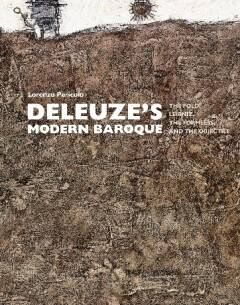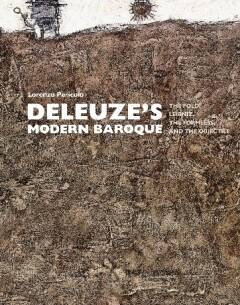
- Afhalen na 1 uur in een winkel met voorraad
- Gratis thuislevering in België vanaf € 30
- Ruim aanbod met 7 miljoen producten
- Afhalen na 1 uur in een winkel met voorraad
- Gratis thuislevering in België vanaf € 30
- Ruim aanbod met 7 miljoen producten
Zoeken
Deleuze's Modern Baroque
The Fold, Leibniz, the Formless, and the Objectile
Lorenzo Pericolo
Hardcover | Engels
€ 153,70
+ 307 punten
Omschrijving
Gilles Deleuze's The Fold (1988) is a vast reflection not only on Leibnizs monadology, but also on the present and future of a new culture informed by a neo-Leibnizian approach to philosophy and the arts. Deleuzes baroque is both a transhistorical epistemic model and an artistic manifesto. It proposes a way of being that thrives on a notion of identity as inherently manifold, potentially contradictory, open-ended, and contingent on infinity. It also outlines the principles of a contemporary aesthetics that relies on the work and theory of artists as varied as Paul Klee, Jean Dubuffet, Simon Hantai, and Tony Smith. In a neo-baroque society, the work of art becomes an objectile, a self-modulating machine able to operate through the input, but without the intervention, of an author. Focusing also on Deleuze and Guattari's What is Philosophy? (1991), this book discusses theoretical questions crucial to artistic debates in the period 19501980: art as philosophy; artistic thinking as opposed or germane to philosophical (and scientific) thinking; painting and sculpture as metaphysical operations; the ground as both the origin and negation of art; color as the degree zero of painting; authorless art; and art as infinity. The final section of the book centers on Peter Eisenman's theory and work in the aftermath of Deconstructivism.
Specificaties
Betrokkenen
- Auteur(s):
- Uitgeverij:
Inhoud
- Aantal bladzijden:
- 263
- Taal:
- Engels
Eigenschappen
- Productcode (EAN):
- 9781915487667
- Verschijningsdatum:
- 15/09/2025
- Uitvoering:
- Hardcover
- Formaat:
- Genaaid
- Gewicht:
- 539 g

Alleen bij Standaard Boekhandel
+ 307 punten op je klantenkaart van Standaard Boekhandel
Beoordelingen
We publiceren alleen reviews die voldoen aan de voorwaarden voor reviews. Bekijk onze voorwaarden voor reviews.








